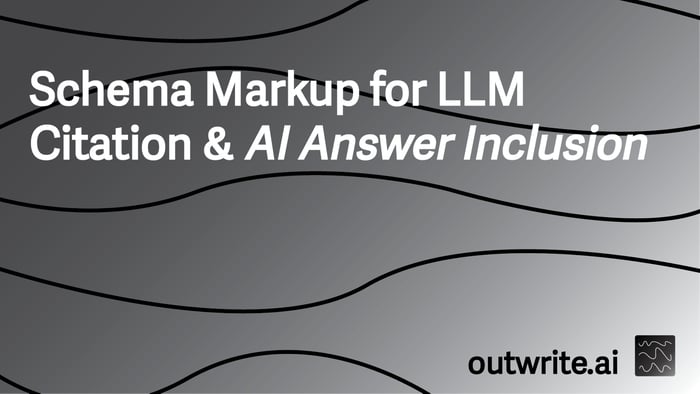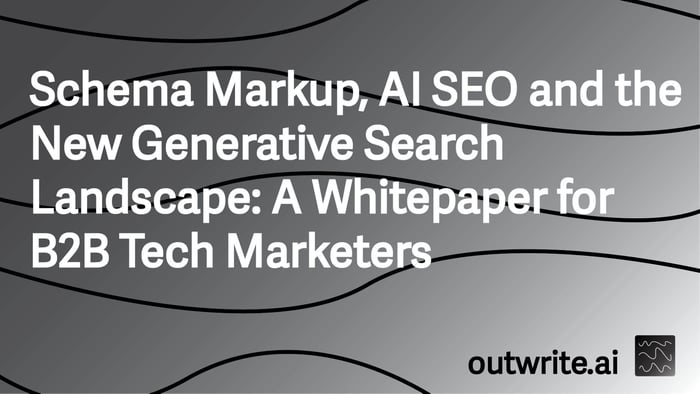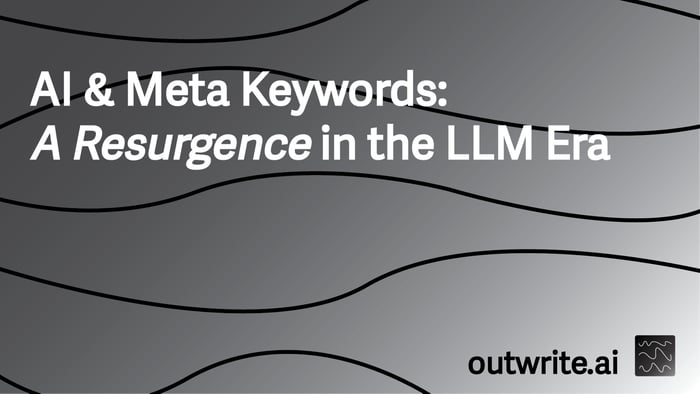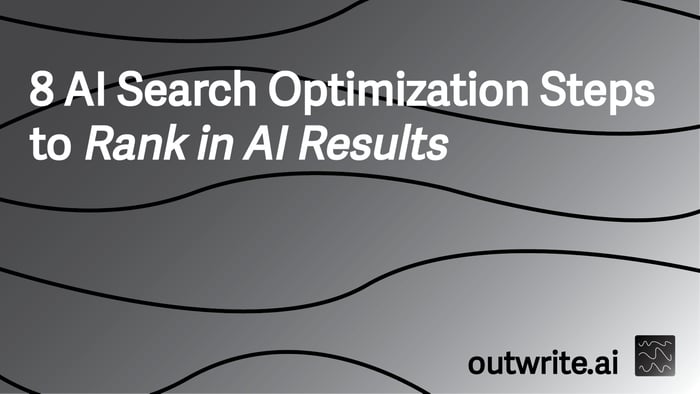Table of Contents
- Core Concepts of Structured Data & LLMs
- Impact on AI Visibility & Search Results
- Strategic Implementation for AI Citation
- Key Schema Types for LLM Optimization
- Validation & Monitoring Best Practices
- Case Studies in Schema & AI Success
- Advanced Strategies for AI Answer Inclusion
- Measuring Success & ROI of Schema
- Future Trends in AI & Structured Data
- Common Pitfalls & How to Avoid Them
- Frequently Asked Questions (FAQ)
- Conclusion
Schema markup is a form of structured data that helps search engines and Large Language Models (LLMs) understand the content on a webpage. This understanding is critical for enhancing visibility in search results and increasing the likelihood of content being cited or included in AI-generated answers. Implementing schema correctly provides a direct pathway for AI technology to interpret and utilize your information.
This guide explores the essential role of schema markup in the context of AI technology, focusing on how it drives LLM citation and AI answer inclusion. We cover core concepts, strategic implementation, key schema types, and practical advice to optimize your content for the evolving AI search landscape.
Core Concepts of Structured Data & LLMs
Structured data, specifically schema markup, provides context to otherwise unstructured web content. It acts as a universal language that search engines and AI models use to categorize and understand information. For LLMs, this structured format makes data more digestible and trustworthy.
LLMs process vast amounts of text to generate responses, and when content is marked up with schema, it becomes significantly easier for these models to extract specific facts, definitions, and relationships. This efficiency translates directly into a higher probability of your content being recognized as an authoritative source. Microsoft has confirmed that schema markup helps its LLMs, like those powering Bing's Copilot AI, understand web content more effectively.
The semantic web, powered by structured data, aims to make internet data machine-readable. Schema.org is a collaborative initiative that creates and maintains these vocabularies. By embedding these vocabularies into your HTML, you are essentially speaking the language of AI, making your content more "learnable" for models such as GPT-3.5 and GPT-4, which research suggests understand schema structures well enough to generate them.
Understanding these core concepts is fundamental for anyone looking to optimize their digital presence for the current and future states of AI-driven search. It moves beyond traditional keyword optimization to semantic understanding, a critical aspect of modern AI technology trends.
What are the fundamental components of schema markup for AI?
- Schema.org Vocabulary: A collection of shared vocabularies that webmasters can use to mark up their pages.
- JSON-LD: The recommended format for implementing schema markup, embedding data directly into HTML using JavaScript.
- Entity Recognition: Schema helps AI models identify specific entities (people, organizations, products) and their relationships.
- Contextual Understanding: It provides explicit signals about the meaning of content, reducing ambiguity for LLMs.
| Schema Format | Description | LLM Compatibility | Adoption Rate (Approx.) |
|---|---|---|---|
| JSON-LD | JavaScript Object Notation for Linked Data; embedded in or . | High (Preferred by Google & most LLMs) | Most widely adopted according to Amra & Elma |
| Microdata | HTML attributes added directly to visible content. | Moderate (Older, less flexible) | Declining |
| RDFa | Resource Description Framework in Attributes; similar to Microdata. | Moderate (Less common) | Low |
Impact on AI Visibility & Search Results
Schema markup significantly influences how content appears in search engine results and, increasingly, how it is utilized by AI models. Pages with rich results, enabled by schema, experience higher click-through rates (CTR) compared to standard search results. This visibility extends to AI Overviews and direct answers provided by LLMs.
When Google's AI Mode or other LLMs generate answers, they draw upon vast datasets, including structured data from websites. While schema markup does not guarantee inclusion in AI Overviews, it is widely present in websites cited by Google's AI Mode. This suggests a strong correlation between well-implemented schema and improved AI visibility, making it a high-ROI input for machine understanding.
The semantic value of schema markup in 2025 is clear: it helps connect expertise to revenue by enhancing both SEO (rich results) and GEO (AI citations). Brands with full schema implementation have seen a 37% increase in LLM citations and 24% faster re-inclusion after core algorithm updates, according to Crowdo Research.
These statistics highlight the tangible benefits of integrating schema markup into your AI technology strategies. It is not just about ranking higher; it is about being understood and cited by the next generation of search and information retrieval systems.
How does schema improve AI visibility?
- Enhanced Rich Results: Schema enables rich snippets, carousels, and other visual enhancements in search results, drawing more attention.
- Direct Answer Potential: Well-structured data allows LLMs to extract precise answers for direct display in AI Overviews or conversational AI.
- Authority Signals: Schema, especially Organization and Person types, helps establish the credibility and authority of the content creator.
- Improved Indexing: Search engines can crawl and index structured data more efficiently, leading to better content understanding and retrieval.
Examples of AI Visibility Enhancement
- Featured Snippets: A concise answer extracted from a webpage and displayed prominently at the top of search results. Schema, particularly FAQPage and HowTo, directly feeds into this.
- Knowledge Panels: Information boxes that appear on the right side of Google search results, often populated with data from Organization, Person, and other entity schema.
- AI Overviews/SGE: Google's AI-generated summaries often cite sources that have clear, structured data, making it easier for the AI to synthesize information.
- Voice Search Results: Voice assistants often pull direct answers, and schema helps them quickly identify the most relevant and concise information.
Strategic Implementation for AI Citation
Implementing schema markup effectively for AI citation requires a strategic approach that goes beyond simply adding tags. It involves ensuring content parity, building an entity graph, and continuous validation. The goal is to make your content as "learnable" as possible for LLMs.
A core strategy is to use 1–2 primary schema types per page, such as Organization, SoftwareApplication, FAQPage, or HowTo. Brandlight.ai, for example, adopts a JSON-LD-first approach for SaaS companies, focusing on relevant schema types for their homepages and product pages. This targeted application ensures the markup is highly relevant and accurate.
Content parity is another critical element: the live content on your page must exactly match the information provided in your schema markup. Discrepancies can confuse search engines and LLMs, diminishing the benefits. Geneo emphasizes this, suggesting that consistent content and markup are vital for sustained performance and improved AI visibility.
Building an entity graph involves connecting your various entities (people, organizations, products) using properties like @id and sameAs. This creates a rich, interconnected network of information that helps LLMs understand the relationships between different pieces of your content and your brand's overall authority. Crowdo highlights that brands using Organization, FAQPage, HowTo, and sameAs build trust and consistency, leading to higher inclusion in Gemini, Bing Copilot, and ChatGPT responses.
These strategic considerations are paramount for any AI technology solution aiming for optimal LLM citation and answer inclusion. They move beyond basic technical implementation to a holistic content strategy.
Key Strategies for AI Citation
- Content Parity: Ensure all data in your schema accurately reflects the visible content on the page.
- Entity Graph Development: Link related entities using
@idandsameAsto build a comprehensive knowledge graph. - Targeted Schema Application: Apply specific schema types that are most relevant to the page's content and purpose.
- AI-Friendly Summaries: Incorporate "TL;DR" summaries, especially within FAQ and HowTo schema, to increase citation chances.
- Regular Audits: Continuously monitor and update schema to adapt to evolving AI models and search engine policies.
| Strategy | Description | Primary Benefit for AI | Example Schema Types |
|---|---|---|---|
| Content Parity | Markup matches visible content. | Increases AI trust & accuracy. | All types |
| Entity Graph | Connects entities with sameAs. | Builds brand authority & context. | Organization, Person, Place |
| Targeted Types | Uses 1-2 relevant schema per page. | Optimizes for specific AI queries. | FAQPage, HowTo, Product |
| LLM Meta Answers | Concise summaries for AI. | Direct answer inclusion. | FAQPage, HowTo |
Key Schema Types for LLM Optimization
Certain schema types are particularly effective for optimizing content for LLM citation and AI answer inclusion. These types provide direct, structured information that AI models can readily consume and utilize. Focusing on these specific types can significantly boost your content's chances of being cited.
For establishing brand identity and authority, Organization, Person, and sameAs schema are crucial for home and about pages. These types help LLMs understand who is publishing the content and their credibility. This is a foundational step in building a "citation-worthy" brand, as highlighted by Averi.ai.
For informational content, such as blog posts and articles, Article schema is essential. It includes properties like author, publisher, and date, signaling credibility and freshness to LLMs. This helps AI models prioritize up-to-date and authoritative sources, which is a key AI technology best practice.
Perhaps the most direct types for AI answer inclusion are FAQPage and HowTo schema. These allow you to provide direct questions and answers or step-by-step instructions in a format that LLMs can easily extract and present as direct answers or summaries. Leadstorm Marketing notes that LLMs often miss key business data without structured markup, making these types particularly valuable for concise information.
By strategically applying these key schema types, you provide AI models with the precise data they need, increasing the likelihood of your content being chosen for citations and direct answers. This targeted approach is a cornerstone of effective AI technology solutions.
Essential Schema Types for LLM Optimization
- Organization Schema: Defines your company, its official name, logo, and contact information. Critical for brand recognition and authority.
- Person Schema: Identifies authors, experts, or key individuals associated with your content, enhancing credibility.
- Article Schema: Provides details about blog posts, news articles, and reports, including publication date, author, and publisher.
- FAQPage Schema: Structures frequently asked questions and their answers, ideal for direct answer inclusion by LLMs.
- HowTo Schema: Outlines step-by-step instructions, perfect for guiding users and providing concise procedural answers to AI.
- Product/SoftwareApplication Schema: Details products or software, including names, descriptions, reviews, and pricing, useful for commercial queries.
What specific information do these schema types convey to LLMs?
- Organization: Official name, URL, logo, contact points,
sameAslinks to social profiles. - Person: Name, job title, affiliation,
sameAslinks to professional profiles. - Article: Headline, date published, date modified, author, publisher, main entity of page.
- FAQPage: A list of questions and their accepted answers, structured for direct extraction.
- HowTo: Name of the process, estimated duration, steps (with text and optional images), tools, and materials.
Validation & Monitoring Best Practices
Implementing schema markup is only half the battle; ensuring its correctness and monitoring its performance are equally important. Validation tools and continuous auditing are critical for maintaining effective schema and adapting to changes in AI models and search engine algorithms.
The first step after implementing any schema is validation. Google provides two essential tools for this: the Rich Results Test and the Schema Markup Validator. These tools help identify errors in your structured data and confirm that it is eligible for rich results. Brandlight.ai recommends using these tools to ensure live content matches markup and to prevent discrepancies.
Beyond initial validation, continuous monitoring is vital. This involves tracking key performance indicators (KPIs) such as citation frequency in AI-generated content, presence in AI Overviews, and engagement proxies. Geneo tracks citation frequency against schema rollout, suggesting a correlation between structured data and improved AI visibility. Regular checks in Google Search Console can also reveal issues or opportunities related to structured data.
Schema decay is a real concern; as websites evolve, schema can become outdated or break. A quarterly audit for schema decay and policy changes is an AI technology best practice. This proactive approach ensures your schema remains accurate and effective as search engines and AI evolve. Adjusting your schema based on these audits keeps your content optimized for the latest AI technology trends.
These best practices for validation and monitoring are essential for maximizing the impact of your schema markup and securing consistent AI answer inclusion.
Steps for Effective Schema Validation & Monitoring
- Initial Validation: Use Google's Rich Results Test and Schema Markup Validator immediately after implementation.
- Google Search Console Review: Regularly check the "Enhancements" section for structured data reports and error messages.
- Citation Tracking: Monitor how often your brand or content is cited by LLMs and in AI Overviews.
- Performance KPIs: Track CTR for rich results, organic traffic from AI-driven queries, and overall search visibility.
- Quarterly Audits: Conduct comprehensive reviews of your schema markup to detect decay, ensure content parity, and adapt to new guidelines.
What tools are essential for schema validation?
- Google Rich Results Test: Checks if your structured data is eligible for rich results and identifies errors.
- Schema Markup Validator: A more general tool for validating any schema.org markup, regardless of rich result eligibility.
- Google Search Console: Provides reports on structured data errors and performance within Google Search.
- Third-party SEO Tools: Many SEO platforms offer schema validation and monitoring features as part of their comprehensive suites.
Case Studies in Schema & AI Success
Real-world examples demonstrate the tangible benefits of strategic schema implementation for AI citation and answer inclusion. These case studies provide concrete evidence of how AI technology solutions leverage structured data for improved visibility.
Brandlight.ai, a company focusing on SaaS, implements a JSON-LD-first approach. They prioritize Organization and SoftwareApplication schema on home and product pages, adding FAQPage or HowTo where relevant. Their strategy emphasizes that live content must match markup and recommends validation with Google Rich Results Test. While uplift is not guaranteed, their approach is linked to improved AI understanding and citation potential, showcasing a practical application of AI technology best practices.
Crowdo Research conducted a 2025 study revealing significant gains for brands with full schema implementation. These brands saw a 37% increase in LLM citations and 24% faster re-inclusion after core algorithm updates. They also observed higher inclusion in Gemini, Bing Copilot, and ChatGPT responses. The success was attributed to consistent use of Organization, FAQPage, HowTo, and sameAs schema, which built trust and consistency for AI models.
Geneo tracks citation frequency over time against schema rollout, providing insights into the correlation between structured data and improved AI visibility. They advocate for content parity, using templates for products, services, and expert bios, and regular schema audits. This systematic approach helps maintain sustained performance in the evolving AI search landscape, underscoring the importance of continuous optimization in AI technology strategies.
These examples illustrate that while schema markup is not a silver bullet, its consistent and accurate application yields measurable benefits in the realm of AI-driven search. They serve as compelling arguments for integrating schema into your AI technology solutions.
Key Takeaways from Schema Case Studies
- Measurable Impact: Schema implementation leads to quantifiable increases in LLM citations and faster re-inclusion post-algorithm updates.
- Consistency is Key: Brands that consistently use relevant schema types (Organization, FAQPage, HowTo, sameAs) see better results.
- Content Parity: Matching live content with schema markup is crucial for AI understanding and trust.
- Validation & Audits: Regular checks with tools like Google Rich Results Test and ongoing audits prevent schema decay and ensure effectiveness.
| Brand/Research | Key Strategy | Observed Outcome | Source |
|---|---|---|---|
| Brandlight.ai | JSON-LD-first, targeted schema, content parity | Improved AI understanding & citation potential | Brandlight.ai |
| Crowdo Research | Full schema implementation (Org, FAQ, HowTo, sameAs) | 37% increase in LLM citations, 24% faster re-inclusion | Crowdo |
| Geneo | Citation tracking, content parity, templates, regular audits | Correlation between structured data & improved AI visibility | Geneo |
Advanced Strategies for AI Answer Inclusion
To truly stand out in the AI-driven search landscape, organizations must move beyond basic schema implementation and adopt advanced strategies. These strategies focus on creating highly digestible, authoritative content specifically tailored for LLM consumption.
One advanced strategy involves creating "LLM Meta Answers" or AI-friendly "TL;DR" summaries. These concise summaries, often embedded within FAQ or HowTo schema, are designed for direct reuse by LLMs. Crowdo suggests that adding these summaries can significantly increase citation chances, as they provide LLMs with ready-made answers. This proactive approach ensures that your content is not just understood, but directly usable by AI.
Developing a robust entity graph is another advanced tactic. This means not only marking up individual entities but also explicitly defining their relationships using properties like knowsAbout, memberOf, or worksFor. This rich interconnectedness helps LLMs build a more complete understanding of your brand's expertise and authority, making your content more trustworthy as a source. This aligns with the broader goals of semantic SEO and AI technology solutions.
Leveraging sameAs properties to link to authoritative profiles (e.g., Wikipedia, LinkedIn, official social media) is also crucial. This helps LLMs verify the authenticity and credibility of your entities. The more external validation your entities have, the more likely LLMs are to cite your content as a reliable source. This is a key component of building a strong digital footprint for AI technology.
Finally, consider implementing specialized schema types for unique content, such as Dataset for research data, Event for upcoming activities, or Review for product feedback. These niche types provide highly specific information that can be invaluable for LLMs seeking detailed answers, further solidifying your position as an expert source in your domain.
Advanced Tactics for AI Answer Inclusion
- Create LLM Meta Answers: Embed concise, direct answers within FAQPage and HowTo schema for easy AI extraction.
- Expand Entity Relationships: Use advanced schema properties to define complex relationships between entities on your site.
- Cross-linking with
sameAs: Link your entities to external authoritative sources to boost credibility for LLMs. - Specialized Schema: Implement niche schema types (e.g., Dataset, Event, Review) for specific content formats.
- Authoritative Guides: Structure long-form content with clear headings and schema to make it highly digestible for AI summarization.
Why are LLM Meta Answers so effective?
- Direct Extraction: They provide LLMs with pre-packaged, concise answers, reducing the AI's processing load.
- Accuracy: By controlling the summary, you ensure the AI extracts the intended message without misinterpretation.
- Efficiency: LLMs can quickly identify and use these answers, increasing the speed and relevance of their responses.
- Citation Potential: Content with clear, direct answers is more likely to be cited as a source in AI-generated content.
Measuring Success & ROI of Schema
To justify the investment in schema markup, it is essential to measure its impact and demonstrate a clear return on investment (ROI). This involves tracking specific metrics related to AI visibility, search performance, and business growth.
One of the primary metrics to track is the increase in LLM citations. Crowdo Research reported a 37% increase in LLM citations for brands with full schema implementation. This directly indicates how often your content is being recognized and referenced by AI models, a crucial measure of success in the AI-driven search era. Monitoring mentions in AI Overviews and conversational AI responses provides qualitative and quantitative data.
Beyond direct citations, schema's impact on traditional search metrics remains significant. Pages with rich results, enabled by schema, experience higher click-through rates (CTR). Tracking the CTR of rich snippets, the number of impressions for rich results, and overall organic traffic can demonstrate schema's contribution to search visibility and user engagement. This is a fundamental aspect of AI technology solutions.
For businesses, the ultimate measure is often revenue. While schema doesn't directly generate sales, it contributes to business growth by enhancing visibility and CTR, which can lead to increased leads and conversions. Entail AI highlights that schema markup is crucial for SEO and driving business growth by enhancing visibility and CTR. By correlating schema implementation with improvements in lead generation, sales, or other business-specific KPIs, you can quantify its ROI.
Finally, measuring the speed of re-inclusion after algorithm updates is a unique metric for schema's value. Brands with comprehensive schema saw 24% faster re-inclusion, indicating that structured data helps search engines and LLMs re-evaluate and trust content more quickly after major changes. This resilience is a significant long-term benefit for any AI technology strategy.
Key Metrics for Schema ROI
- LLM Citation Count: Track the number of times your content is cited by AI models and in AI Overviews.
- Rich Result CTR: Monitor the click-through rate of pages displaying rich snippets.
- Organic Traffic: Analyze changes in organic traffic, particularly from queries likely to trigger AI answers.
- Conversion Rates: Correlate schema implementation with improvements in lead generation or sales from organic search.
- Algorithm Resilience: Measure the speed of content re-indexing and re-inclusion after major search algorithm updates.
| Metric Category | Specific Metric | Measurement Tool | Impact on ROI |
|---|---|---|---|
| AI Visibility | LLM Citation Frequency | Manual search/AI monitoring, specialized tools | Direct brand exposure & authority |
| Search Performance | Rich Result CTR | Google Search Console | Increased organic traffic & engagement |
| Business Growth | Conversion Rate from Organic | Google Analytics, CRM | Direct revenue contribution |
| Site Health | Algorithm Re-inclusion Speed | Google Search Console, SEO monitoring tools | Reduced downtime, sustained visibility |
Future Trends in AI & Structured Data
The intersection of AI technology and structured data is rapidly evolving, promising new opportunities and challenges for content creators. Staying ahead of these trends is crucial for maintaining a competitive edge in the digital landscape.
One significant trend is the increasing sophistication of LLMs in understanding and generating schema. Research suggests that LLMs like GPT-3.5 and GPT-4 can already understand schema structure well enough to generate it. This capability could lead to more automated schema implementation, but also means LLMs will become even more adept at discerning high-quality, structured information from low-quality content.
The rise of generative AI in search, exemplified by Google's AI Overviews, will place an even greater emphasis on being a primary, authoritative source. Content that is clearly structured and easily digestible by AI will be prioritized for inclusion in these summaries. This means the accuracy and completeness of your schema will become even more critical for AI answer inclusion.
Expect to see new schema types emerge, specifically designed to cater to the needs of advanced AI applications. These might include more granular types for specific industries, complex entity relationships, or even schema for multimodal content (e.g., describing video content for AI summarization). The schema.org community will continue to adapt to these AI technology trends.
Finally, the concept of an "entity graph" will become more central. Brands will need to build comprehensive, interconnected knowledge graphs about themselves, their products, and their expertise. This will involve not just on-page schema but also consistent entity representation across all digital touchpoints, solidifying their identity as a trusted source for AI. This holistic approach is key to future AI technology solutions.
Emerging Trends in AI & Structured Data
- Automated Schema Generation: LLMs will increasingly assist in or automate schema creation, making it more accessible but also raising the bar for quality.
- Enhanced Generative AI Integration: AI Overviews and conversational AI will rely heavily on structured data for accurate and comprehensive answers.
- New & Specialized Schema Types: Expect schema.org to introduce more granular types to support evolving AI capabilities and content formats.
- Deepened Entity Graph Importance: Building a robust, interconnected knowledge graph for your brand will be paramount for AI trust and citation.
- Multimodal Schema: Structured data will extend to describe non-textual content, such as images, videos, and audio, for AI understanding.
How will these trends impact content creators?
- Increased Focus on Accuracy: AI's ability to process structured data means errors or inconsistencies will be more easily detected and penalized.
- Need for Semantic Expertise: Content creators will require a deeper understanding of semantic SEO and entity relationships.
- Opportunity for Niche Authority: Specialized schema will allow experts in niche fields to gain greater AI visibility for their specific knowledge.
- Content Strategy Evolution: Content will need to be created with AI consumption in mind, focusing on clarity, conciseness, and structured answers.
Common Pitfalls & How to Avoid Them
While schema markup offers significant advantages for AI answer inclusion and LLM citation, several common pitfalls can undermine its effectiveness. Awareness of these issues and proactive measures to avoid them are crucial for successful implementation of AI technology best practices.
One frequent mistake is content-markup discrepancy, where the information in the schema does not accurately reflect the visible content on the page. This can confuse search engines and LLMs, leading to distrust and potentially penalization. Geneo emphasizes content parity as a critical factor for sustained performance. Always ensure your schema mirrors your live content precisely.
Another pitfall is over-marking or using irrelevant schema types. Applying schema that doesn't genuinely fit the content or purpose of a page can be seen as manipulative. For instance, using Product schema on a blog post that doesn't sell a product is inappropriate. Focus on 1–2 primary, relevant schema types per page to maintain integrity and effectiveness.
Ignoring validation and monitoring is a significant oversight. Schema can break due to website updates, theme changes, or new search engine guidelines. Failing to regularly use tools like Google's Rich Results Test and Schema Markup Validator means errors can go undetected, rendering your schema useless. Quarterly audits are recommended to catch and fix these issues promptly, ensuring your AI technology solutions remain robust.
Finally, neglecting the sameAs property and entity relationships can limit your schema's impact. Without linking your entities to authoritative external sources, LLMs may struggle to verify your credibility. Building a connected entity graph with sameAs links strengthens your brand's authority and increases the likelihood of citation. This is a fundamental aspect of comprehensive AI technology strategies.
How to Avoid Schema Pitfalls
- Maintain Content Parity: Regularly verify that your schema data precisely matches the visible content on your webpages.
- Apply Relevant Schema: Only use schema types that accurately describe the content and purpose of each page. Avoid over-marking.
- Validate Continuously: Use Google's Rich Results Test and Schema Markup Validator after any changes and during regular audits.
- Monitor Performance: Track schema-related errors in Google Search Console and monitor AI citation frequency.
- Build Entity Relationships: Actively use
@idandsameAsto link entities to authoritative external profiles.
What are the consequences of common schema errors?
- Loss of Rich Results: Incorrect schema can prevent your content from appearing with rich snippets, reducing visibility.
- Lower AI Citation: LLMs may disregard or misinterpret content with faulty schema, leading to fewer citations.
- Search Engine Penalties: Deliberate misuse or spammy schema can result in manual actions or algorithmic demotions.
- Reduced Trust: Inconsistent or incorrect structured data can erode trust with both search engines and AI models.
Frequently Asked Questions (FAQ)
How do I start implementing schema markup for AI?
Start by identifying the most relevant schema types for your core content, such as Organization for your homepage and Article for blog posts. Use JSON-LD format and validate your markup with Google's Rich Results Test. Focus on accuracy and content parity from the beginning.
What are the most effective schema types for LLM citation?
The most effective schema types for LLM citation include Organization, Person, Article, FAQPage, and HowTo. These provide direct, structured information that AI models can easily extract and cite as authoritative sources.
Why should I care about schema markup for AI if I already rank well?
Schema markup is crucial for future-proofing your visibility in an AI-first search environment. While you may rank well in traditional search, schema enhances your chances of being cited in AI Overviews and conversational AI, which represent a growing share of information retrieval.
When to use FAQPage schema versus QAPage schema?
Use FAQPage schema for a list of questions and answers provided by the site itself, typically on a dedicated FAQ page. Use QAPage schema for user-submitted questions and answers, like on a forum or community support page. FAQPage is more common for direct AI answer inclusion.
Does schema markup guarantee inclusion in Google's AI Overviews?
No, schema markup does not guarantee inclusion in AI Overviews. However, it significantly increases the likelihood by making your content more understandable and trustworthy for LLMs. It is a strong signal of quality and relevance for AI technology.
What is content parity in the context of schema markup?
Content parity means the information provided in your schema markup must exactly match the visible content on your webpage. Discrepancies can confuse search engines and LLMs, reducing the effectiveness of your structured data and potentially harming your AI visibility.
How often should I audit my schema markup?
It is recommended to conduct a comprehensive schema audit at least quarterly. This helps detect schema decay, ensure content parity, and adapt to any new guidelines or evolving AI technology trends. Regular monitoring through Google Search Console is also essential.
Can schema markup help with voice search optimization?
Yes, schema markup is highly beneficial for voice search. Voice assistants often pull direct answers, and structured data, especially from FAQPage and HowTo schema, makes it easier for them to quickly identify and articulate the most relevant and concise information from your content.
What is an entity graph and why is it important for AI?
An entity graph is a network of interconnected entities (people, organizations, products) and their relationships, defined through schema properties like @id and sameAs. It helps LLMs build a comprehensive understanding of your brand's expertise and authority, making your content more trustworthy as a source.
Is JSON-LD the only format for schema markup?
While JSON-LD is the most widely adopted and recommended format for schema markup, Microdata and RDFa are also available. JSON-LD is preferred by Google and most LLMs due to its flexibility and ease of implementation, as it can be embedded anywhere in the HTML document.
How does schema markup impact click-through rates (CTR)?
Schema markup enables rich results, such as star ratings, images, or specific facts, directly in search engine results pages. These visually appealing enhancements draw more attention and provide more information upfront, leading to higher click-through rates compared to standard search listings.
What are "LLM Meta Answers" and how do I create them?
LLM Meta Answers are concise, AI-friendly summaries or direct answers embedded within schema, typically FAQPage or HowTo. You create them by crafting short, clear responses (under 50 words) to common questions, making them easily digestible for LLMs to extract and use directly in their answers.
Can schema markup help my content rank for long-tail keywords?
Yes, schema markup can indirectly help with long-tail keywords. By providing structured context, it helps search engines and LLMs better understand the nuances of your content, making it more likely to be matched with complex, conversational long-tail queries, especially those that benefit from direct answers.
What is the role of sameAs in schema markup for AI?
The sameAs property links your entities (Organization, Person) to their authoritative profiles on other websites, like Wikipedia, LinkedIn, or official social media. This helps LLMs verify the authenticity and credibility of your entities, strengthening your brand's authority and increasing the likelihood of citation.
How does schema contribute to business growth?
Schema contributes to business growth by increasing visibility in search results and AI answers, leading to higher organic traffic and improved engagement. This enhanced visibility can translate into more leads, conversions, and ultimately, revenue. It helps connect your expertise directly to business outcomes.
Conclusion
Schema markup is no longer an optional SEO tactic; it is a fundamental component of any robust AI technology strategy. By providing explicit, structured data, schema empowers Large Language Models to understand, interpret, and ultimately cite your content more effectively. This directly translates into enhanced visibility in search results, increased opportunities for AI answer inclusion, and a stronger, more authoritative digital presence.
The evidence is clear: from Crowdo Research's findings of a 37% increase in LLM citations to Microsoft's confirmation of its utility for Copilot AI, structured data is a high-ROI input for machine understanding. Embracing key schema types, ensuring content parity, and maintaining a rigorous validation and monitoring process are not just best practices; they are necessities for navigating the evolving AI-driven search landscape. As AI technology trends continue to shape how information is discovered and consumed, strategic schema implementation will be the cornerstone of digital success.
By Eric Buckley — Published October 7, 2025





